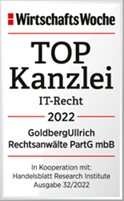The First Civil Senate of the Federal Court of Justice (BGH), which is responsible, inter alia, for trade mark law, has ruled that the manufacturer of a motor vehicle cannot prohibit the sale of toy model cars which, as a scaled-down replica of its original vehicle, also bear the trade mark of the original manufacturer in the corresponding place by invoking its trade mark rights.
The applicant, Adam Opel GmbH, is the proprietor of a figurative trade mark registered for motor vehicles and toys which reproduces the Opel Blitz sign. It contests the marketing of a radio-controlled toy car of the defendant, which is a scaled-down image of an Opel Astra V8 Coupé and bears the Opel Blitz sign on the radiator grille.
The Nuremberg-Fürth Regional Court sought a preliminary ruling from the Court of Justice of the European Union on the question of whether this reduced-scale replica constitutes unauthorised use of a trade mark. The latter ruled that it was decisive for the referring court to determine whether the relevant public understood the identical sign on the toy model cars as an indication that they came from the plaintiff or an undertaking economically linked to it. The Regional Court thereupon dismissed the action seeking, inter alia, injunctive relief and damages. It assumed that the public would perceive the trademark affixed in the correct place on a scaled-down image of a large original vehicle as part of the model vehicle and would neither attribute it to the manufacturer of the prototype nor assume that there were economic relationships, in particular licensing relationships, between the manufacturers of the prototype and the toy model. The Court of Appeal confirmed this view. The plaintiff's appeal was unsuccessful.
The Federal Court of Justice denied infringement of the plaintiff's trade mark registered for toys. Admittedly, the requirements for a trade mark infringement are met insofar as the affixing of the Opel Blitz sign on the defendant's toy car is the use of a sign identical with the plaintiff's trade mark for identical goods (toys). However, this does not impair the main function of the trade mark, which is to inform consumers of the origin of the goods (here: toy car), nor any other trade mark function, because the targeted consumers only understand the Opel flash sign on the defendant's toy cars as a - faithful - reproduction of the trade mark which the plaintiff's replica car bears in the corresponding place. The Opel flash sign is only seen as a reproduction detail of reality. Consequently, consumers do not see it as an indication of the origin of the model car.
Insofar as the plaintiff's trade mark is registered for motor vehicles, the goods are not similar (toy cars and motor vehicles), so that the assumption of a trade mark infringement due to the creation of a likelihood of confusion is also ruled out. From the point of view of the protection of a trade mark with a reputation - for motor vehicles - a trade mark infringement is also to be denied. In this respect, there is no unfair impairment or exploitation of the reputation of the plaintiff's trade mark registered for motor vehicles.
Judgment of the Federal Court of Justice of 14 January 2010 - I ZR 88/08 - Opel-Blitz II
Lower courts:
Nuremberg Higher Regional Court - Judgment of 29 April 2008 - 3 U 1240/07
GRUR-RR 2008, 393 = WRP 2008, 1257
Nuremberg-Fürth Regional Court - Judgment of 11 May 2007 - 4HK O 4480/04
WRP 2007, 840
ECJ - Judgment of 25 January 2007 - C-48/05,
[2007] ECR I-1017 = GRUR 2007, 318 = WRP 2007 - Adam Opel
Source: Press release of the BGH
Goldberg Attorneys at Law
Michael Ullrich, LL.M. (Information Law)
Lawyer and
Specialist lawyer for information technology law (IT law)
E-mail: info@goldberg.de


